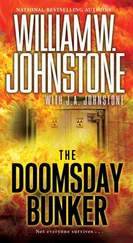The overwhelming power of vril brings ‘the art of destruction to such perfection’ that no army can stand against it and win. For this reason, the ‘age of war’ has ended for the Vril-ya, who realized that a war between two armies equipped with this force could result only in mutual annihilation. The force of the Vril Staff could also be modified, ‘so that by one process it destroys, by another it heals’. The ‘life-giving’ force of vril has enabled these people to live well beyond a human lifespan and to banish disease. 10
Bulwer-Lytton’s popular novel raised an immensely influential idea that was to take hold in the following century: that the discovery of an inexhaustible energy source would transform society into a utopia. The super-energy would produce superweapons so destructive that war would be redundant. Economic prosperity, social harmony, long life, good health and peace – all would flow from the new energy source. For Bulwer-Lytton, writing in the shadow of Darwin, it was an evolutionary step that would lead to the emergence of a super-race.
Edward Bulwer-Lytton was inspired by electricity to dream up vril. Its miraculous properties would be attributed first to radium and later to atomic energy. From its medical benefits to its destructive power, radium was soon heralded as the energy source that would transform society. Indeed, some even claimed that Bulwer-Lytton had predicted its discovery. 11Today the name vril still lives on, although not in quite the way Bulwer-Lytton might have wanted. It was hijacked by John Lawson Johnston, from Scotland, who wanted a catchy name for his new invention, ‘fluid beef’, which he decided to call Bovril.
These days, scarcely a week passes without a news story about a new application of genetics that promises to save lives. Similarly, at the turn of the century, reports about scientific advances that would lead to cheap and limitless energy beguiled readers many of whose homes were still lit by gaslight. One report told how the ‘worldrenowned’ French chemist Marcelin Berthelot had pinned his hopes for ‘limitless energy’ on exploiting the heat at the centre of the earth: ‘We shall find in this heat the support of all life and all industry.’ 12In 1899, one of the strangest of such schemes, based on the novel qualities of ‘liquid air’, was hailed by the press as a revolution. New York inventor Charles E. Tripler astounded a reporter from McClure’s by reducing ‘the air of his laboratory to a clear, sparkling liquid that boils on ice, freezes pure alcohol, and burns steel like tissue paper’.
Air forms a liquid at 196°C, and its constituent gases begin to boil at temperatures just above this. With his patented machine for producing large quantities of liquid air, Tripler claimed to be able to run an engine on nothing but thin air. The initially sceptical reporter watched as Tripler poured his liquid air into the engine. His eyes widened as within seconds the piston began to pump vigorously, driving the flywheel: ‘the little engine stood there in the middle of the room running apparently without motive power, making no noise and giving out no heat or smoke, and producing no ashes’. 13
It was indeed an ‘almost inconceivable marvel’, and Tripler confidently predicted that coal and wood would soon be redundant as fuels. As he reasonably pointed out, ‘air is the cheapest material in the world’. Still more revolutionary was his claim to be able to create more liquid air with his machine than it took to power the engine. That meant he had discovered the holy grail of energy: a way of generating free power.
Charles Tripler’s vision of boilerless ocean liners and locomotives running on nothing but air had investors and eternal optimists flocking to his door. A stock company valued at $20 million was soon formed to put the discovery to commercial use. Utopia was just around the corner, or so they thought. Of course, Tripler never managed to create free energy, and his idea joined all the other perpetual motion machines on the scrapheap of science. 14
At the same time as Tripler was beguiling American investors with an energy source that defied the laws of thermodynamics, another, rather more promising discovery was being made in Paris: the mysteriously glowing element radium. Sir William Crookes, inventor of the tube that led to the discovery of X-rays, was not one to be taken in by outlandish tales of perpetual motion. But even he was willing to admit in 1901 that radium was a whole new ballgame. The dapper Sir William, sporting an immaculately trimmed white goatee and finely twirled mustachios, told a journalist that ‘as an example of seemingly continuous energy – something of which we had previously no conception – who can tell of what fresh achievement it may be the forerunner?’ 15
* * *
Umberto Eco’s The Name of the Rose is a dark novel about zealotry and forbidden knowledge. The Franciscan monk Brother William of Baskerville, whose name hints knowingly at the scientific detective Sherlock Holmes, is investigating a series of monastic murders. He has a keen eye for ‘the evidence through which the world speaks to us like a great book’. 16The solution to this medieval mystery seems to lie in a profane manuscript which was read by all the victims. In this godly community, someone wants to teach the monks a lethal lesson about the dangers of forbidden knowledge.
This fatal manuscript has its deadly equivalent in the atomic age. For there is a real text whose pages are literally lethal to its readers. The three black notebooks used by Marie Curie in her experiments from December 1897 are still so radioactive that they have to be kept in a lead safe in the Bibliothèque Nationale in Paris. Anyone wishing to consult them must sign a form acknowledging that they are aware of the risks. They are among the most haunting documents of the atomic age.
The Curies’ makeshift laboratory, its furniture and Marie’s notebooks became radioactive by contact with the chemicals processed by the first two atomic scientists. Visitors at the time reported that the walls of the laboratory ‘glow visibly at night’. 17Marie Curie died in 1934 of leukaemia contracted through her exposure to radioactivity.
It was Henri Becquerel’s discovery of natural radioactivity, a few months after Röntgen’s X-rays were revealed, that propelled Marie Curie into her dangerous quest for radioactive elements. Unlike Röntgen’s X-rays, the discovery of the so-called Becquerel rays provoked little public interest. But the fact that uranium emitted rays apparently similar to X-rays had a greater impact on the course of the next century than any other scientific discovery.
Henri Becquerel came from a thoroughly scientific family. His father and grandfather had both been eminent scientists. Becquerel’s own son would also follow in his father’s footsteps. In the 1840s, Becquerel’s grandfather told his son: ‘I will never be satisfied with explanations they give why some chemicals and minerals shine in the dark. Fluorescence is a deep mystery and nature will not give up the secret easily.’ 18Father and son dedicated their lives to the study of this strange phenomenon, which most people thought was caused by the slow release of absorbed sunlight.
When Becquerel heard that Röntgen had discovered rays that could affect photographic plates, he began investigating whether visible fluorescence was accompanied by invisible X-rays. He assumed that sunlight was needed to make the fluorescent chemicals active, and so his experiment consisted of leaving sealed photographic plates, on which some uranium sulphate had been placed, out in the sun. But a spell of cloudy weather intervened, and Becquerel put his experimental apparatus away, locking the uranium sulphate and the photographic plate in a dark drawer. It was lucky that he did, and even more fortunate that he later decided to develop the plate. For when he did so, he was amazed to see an image. By the end of February 1896 he could tell the French Academy of Sciences that ‘there is an emission of rays without apparent cause. The sun has been excluded.’ 19It was an astonishing discovery: matter produced rays which came not from the sun but from some unknown energy source deep within itself.
Читать дальше












